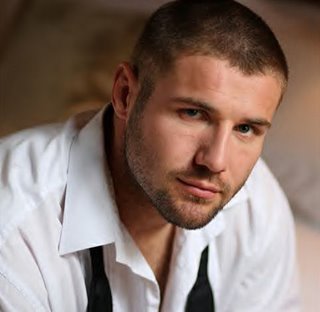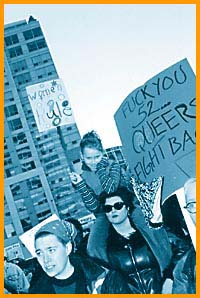|
presents THIS DAY IN GAY HISTORY based on: The White Crane Institute's 'Gay Wisdom', Gay Birthdays, Gay For Today, Famous GLBT, glbt-Gay Encylopedia, Today in Gay History, Wikipedia, and more …
Collected by Ted September 14 [{(o)}]|[{(o)}]|[{(o)}]|[{(o)}]| [{(o)}]|[{(o)}] 1306 – France: Philip IV orders the arrest of two Knights Templar because they exchanged an obscene "kiss" that pretty much covered their entire bodies.
1769 – Alexander von Humboldt, German naturalist and explorer, born. (d.1859); The younger brother of the Prussian minister, Wilhelm von Humboldt (1767-1835), Alexander von Humboldt's work on botanical geography is considered foundational to the fields of biogeography, physical geography and meteorology. He is a prime example of a Renaissance man of the sciences, studying in astronomy, vulcanology, and geology. Thomas Jefferson called him, The most important scientist I ever met. 19th century Freethinker, Robert G. Ingersoll said, "He was to science what Shakespeare was to the drama." In the 19th Century, Alexander von Humboldt was one of the most famous men in Europe and is remembered for not only his own scientific achievement, but for his nurturing and mentoring of young, up-and-coming scientists. The American painter Rembrandt Peale painted him, between 1808 and 1810, as one of the most prominent figures in Europe at the time. Between 1799 and 1804, Humboldt traveled extensively in Latin America, exploring and describing it for the first time in a manner generally considered to be a modern scientific point of view. His description of the journey was written up and published in an enormous set of volumes over 21 years. He was one of the first to propose that the lands bordering the Atlantic Ocean were once joined (South America and Africa in particular). His five-volume work, Kosmos (1845), attempted to unify the various branches of scientific knowledge. In Voyage of the Beagle, where Darwin describes his own scientific exploration of the Americas, Darwin says "He was the greatest traveling scientist who ever lived. I have always admired him; now I worship him." Much of Humboldt's private life remains a mystery because he destroyed his private letters. In 1908 the sexual researcher Paul Näcke, who worked with outspoken gay activist Magnus Hirschfeld, gathered reminiscences of him from people who recalled his participation in the homosexual subculture of Berlin. A travelling companion, the pious Francisco José de Caldas, accused him of frequenting houses where 'impure love reigned', of making friends with 'obscene dissolute youths', and giving vent to 'shameful passions of his heart'. On the question of homosexuality, author Robert F. Aldrich concludes, "As for so many men of his age, a definite answer is impossible." But throughout his life Humboldt formed strong emotional attachments to men. In a letter to Reinhard von Haeften, a soldier, he wrote: "I know that I live only through you, my good precious Reinhard, and that I can only be happy in your presence."
1892 – Charlotte Charlaque was born in Berlin-Schöneberg on this date, and raised with the name Curt Scharlach. There was a brother Hans, seven years older. The family, who were Jewish, emigrated to the US at the turn of the century and settled in San Francisco, where Edmund Scharlach worked as a sales representative in textiles. Her mother, Jenny, returned to Germany in 1910. Edmund, who had become a US citizen stayed and remarried in 1916. Hans returned to Germany shortly after the start of the Great War in 1914. After 1919 he worked as an independent banker, until he sold his business in the mid-1920s. Curt worked briefly as a female impersonator, and consulted Harry Benjamin who suggested Magnus Hirschfeld in Berlin. Curt moved to Berlin in 1922 when Jenny was seriously ill, and lived with Hans for a while, but also spent time in France and became proficient in the language. Increasingly Curt was rather Charlotte, and obtained a Transvestitenschein, to legally dress as the woman that she felt she was. She had completion surgery at the Am Urban hospital in Berlin-Kreuzberg in 1929-30, under the aegis of Magnus Hirschfeld’s Institut für Sexualwissenschaft. The surgery was done by Erwin Gohrbandt, and Felix Abraham paid the required 50 Reichsmarks. Charlotte worked at the Institute as a receptionist. Her formal name was now Charlotte Curtis Charlaque. Charlotte met Toni Ebel and introduced her to Hirschfeld who accepted her into the surgical program. Toni had completion surgery in several operations in 1932. By that time Charlotte and Toni had become lovers. The Swedish journalist Ragnar Ahlstedt visited them at their flat at Nollendorfstraße 24 in Berlin-Schöneberg, and wrote about them in his Män som blivit kvinnor, 1933. They lived cheaply: Charlotte said that she was an actress and Toni was able to sell some paintings and drawings. Under Charlotte’s guidance, Toni converted to Judaism. In addition Toni had previously been a member of the Socialist USPD. After the Nazi takeover, one of Toni’s half sisters warned them that they were under observance, and they fled to Karlsbad, in Czechoslovakia’s Sudetenland, the largest spa town in Europe, in May 1934. Charlotte gave English and French lessons, and Toni painted pictures for guests at the spa. The next year they moved to Prague and then to Brno. However they had to report to the police every fortnight and were advised to leave. In March 1942 Charlotte was arrested by the Czechoslovak Aliens Police and jailed for being a Jew. Toni managed to persuade the Swiss consul that Charlotte was a US citizen, that she had submitted her documents to the US consul in Vienna and was waiting for a new passport. This resulted in Charlotte being sent to an “American camp” and later deported to the US. She sailed from Lisbon 2 July 1942. Toni attempted to follow but was not approved as Reichsdeutsche, and was not allowed to travel to Lisbon. In New York Charlotte had to endure an extended medical exam. She was taken in by the Red Cross who housed her in a poor house in Leroy Street, Manhattan. She did some translations but suffered in her gallbladder and she had a stomach ulcer. She corresponded with Toni who settled in East Germany. She could not afford to return to Germany, and as a Jew was reluctant to do so. Later she made a living coaching young actors in “English diction”, and she also acted in several Off-Broadway productions, and was known for a while as the Queen of Brooklyn Heights Promenade. In December 1952 she wrote to Christine Jorgensen’s parents to explain that she too was transsexual. She died in 1963 in Brooklyn, NY.
1910 – Lehman Engel, born in Jackson, Mississippi, (d.1982) was an American composer and conductor of Broadway musicals, television and film. Engel worked in a variety of positions on television specials. He was composer and conductor of the music for the famed 1954 television production of Shakespeare's Macbeth, starring Maurice Evans and Judith Anderson, but did not work on the 1960 remake starring the same two actors. He was conductor of the first (and so far, the only) television version of Leonard Bernstein's Wonderful Town (1958) (TV), as well as, in the preceding years, of the Hallmark Hall of Fame productions of Shakespeare's Twelfth Night in 1957, The Taming of the Shrew in 1956, and The Tempest, in 1960, all with Maurice Evans. He also conducted the music for the Broadway musical version of Lil' Abner, but not for the 1959 film version of the show. He also musically directed and vocally arranged the 1959 musical Take Me Along. Lehman Engel also composed the music for the 1939 Broadway revival of Hamlet, starring Maurice Evans, as well as for the original 1948 stage production of Maxwell Anderson's Anne of the Thousand Days, starring Rex Harrison and Joyce Redman. In 1965 he served as the musical director for the Broadway production of La Grosse Valise (composer Gerard Calvi, lyrics by Harold Rome) Engel also conducted the first 3-LP version of Gershwin's opera Porgy and Bess, a 1951 Columbia Masterworks Records album which was highly acclaimed, but did not, as advertised, really feature the complete opera. The mono recording was eventually released on CD. It was the longest Porgy and Bess album made up to that time (129 minutes), and would remain so for many years, until it was superseded in the 1970s by two complete recordings of the opera which both won Grammys. Between the late 1940s and early 1950s, Engel conducted what were then the most complete recordings of several classic Broadway musicals of the past, many of which were appearing as albums for the first time - among them Girl Crazy, Oh, Kay!, Babes in Arms, and Pal Joey. All of these were studio recordings, not original cast albums. The Pal Joey recording was so successful that it actually led to a major, long-running revival of the show in 1952, with the same two stars who had appeared on the album. He also conducted what was then the most complete recording of The Student Prince in 1952, as well as what was then the most complete recording of Oklahoma! that same year. For RCA Victor, Engel conducted studio recordings of Carousel in 1955; and Show Boat in 1956. These versions were also more complete than previous recordings of these shows. All of these recordings were eventually issued on CD and were milestones in their time for their completeness. Lehman Engel made no secret of his homosexuality, but in his autobiography This Bright Day (1974) he made no overt reference to it.
1916 – Eric Bentley Critic, playwright & cabaret performer, born. Eminent translator of the works of Bertolt Brecht and renowned critic, playwright, singer, editor and translator. He became an American citizen in 1948, and currently lives in New York City. In 1998 he was inducted into the American Theater Hall of Fame; he is also a member of the New York Theater Hall of Fame, in recognition of his years of performances in cabarets. In addition to teaching at Columbia University, which he joined in 1953, Bentley was a theater critic for The New Republic in the 1950s, known for his blunt style of theatre criticism. Tennessee Williams and Arthur Miller threatened to sue Bentley for his unfavorable reviews of their work, but abandoned the attempt. Bentley met Bertolt Brecht at UCLA as a young man and is considered one of the pre-eminent experts on Brecht, whose work he has translated. He edited the Grove Press issue of Brecht's work. In 1969, Bentley came out of the closet and declared he was Gay. In an interview in the New York Times on November 12, 2006, he says he was married twice before coming out at age 53, and deciding, at the same time, to leave his post at Columbia to concentrate on his writing. He has stated his being Gay as an influence on his theater work, especially his play Lord Alfred's Lover.
James Leo Egan was the elder son of James Egan, a maker of piano cabinets, and Josephine ("Nellie") Egan, a homemaker. The Egans married rather later in life than was usual, and they were 56 and 41, respectively, when Egan was born on September 14, 1921 in Toronto. His brother, Charles, also gay, arrived fourteen months later. Egan doubted that the age of their parents had anything to do with his and his brother's sexual orientation, but, he noted, "it is rather interesting, considering the number of gay men I've known who came from a similar situation." Egan stated in his memoir, "I have nothing but the happiest memories of my childhood." He enjoyed an excellent relationship with his father, with whom he often "would walk for miles on a Saturday in Toronto" and who, when Egan was nine, took him to the beach where he himself had learned to swim in the 1870s. Skinny-dipping was the custom of the men and boys who frequented the beach, and Egan recalled "an undefined excitement" upon seeing them although he did not interpret it as a sexual attraction at the time. At around the age of thirteen, Egan came to recognize that he was gay, but despite the fact that he felt "somehow different from the other boys" in his neighborhood, he was always comfortable with his sexual orientation. "I never spent so much as ten seconds agonizing over the fact that I was attracted to other males," he wrote. After completing grade school in 1936, Egan elected to go to the public Eastern High School of Commerce for a general commercial course, a practical choice. He had a strong interest in science and had hoped to become a doctor, but since his father had died earlier in the year and the Great Depression was in full force, the family's straitened financial circumstances extinguished any hope of a college education. Egan found his first year at Eastern "just excruciating" since he was only interested in two courses, English literature, in which he had "a supplementary reading list that was pages long," and a general science class. He excelled in both but failed everything else. He came back to repeat the year but quit in frustration after two months. An uncle helped him get a job on a farm, where he worked for two years to help support his family. Egan turned eighteen shortly after Canada's entry in World War II in September 1939, and he attempted to join the army but was rejected because of a small corneal scar, the result of an automobile accident. In 1943, despite his exemption from military service, Egan volunteered again and was accepted by the merchant navy. His assignments took him to the Mediterranean, Australia, New Guinea, and the Philippines. In the South Pacific, he wrote, "we were dive-bombed and chased by submarines," but "I was very fortunate in that I was never sunk." Egan's first naval voyage was to Bari, Italy. He avoided going ashore with his crew mates, whom he described as "quite often hard-drinking heterosexuals with limited interests," which consisted mainly of getting drunk and finding a brothel. Egan generally made excuses and stayed on the ship or slipped ashore later. In some ports, Egan found "an incredible gay underworld" in bars where "you'd see uniforms from every one of the Allied forces--Marines and sailors and Air Force--and ranks up to majors and colonels." Discharged from the merchant navy in 1947, Egan returned to Toronto and worked at various jobs without finding a particular calling. He also began frequenting "the gay spots around town," including the beverage room at the Savarin Hotel and the King Cole Room at the Park Plaza Hotel. On one of his visits to the Savarin he was surprised to see his brother, Charlie, who he had not previously known was gay. Although the brothers "did not get along at all" as youngsters, they developed and sustained a very close relationship as adults. Egan longed for a steady partner and found one when a friend introduced him to Jack Nesbit at the Savarin. The two soon moved in together. Both of their families were supportive of the couple. Egan wrote that his mother "took to [Nesbit] like another son, and they had a wonderful relationship for as long as she lived." Egan was never sure if Nesbit's parents truly understood the nature of his relationship with their son but was gratified when Mrs. Nesbit "right out of the clear blue sky" once said, "I can die happy because Jack's found someone who can look after him." In 1949 Egan took a job at a small biological supply company, and he and Nesbit relocated to the small town of Oak Ridges, some fifteen miles north of Toronto. That same year he took his first steps toward becoming a gay rights activist. Egan wrote in his memoir that "Toronto could be a dangerous place for gay men during the late 1940s and 1950s." The police would periodically conduct sweeps of gay cruising areas, often using young officers to entrap and arrest gay men. Conviction on a charge of gross indecency was a virtual certainty. Those found guilty were fined one hundred dollars, but the true harm came from the publication of the men's names--and sometimes their addresses--in "the local scandal sheets." Such a disclosure could cost a man his job and make him an object of scorn. In the wake of the publication of Kinsey's Sexual Behavior in the Human Male in 1948, an increasing number of articles about homosexuality began appearing in both the tabloid and mainstream press. Egan was outraged by the "gross inaccuracies" that he found in the pieces and began writing letters to the editors in protest. The major magazines to which he wrote, including Coronet, Esquire, Ladies' Home Journal, Parents' Magazine, Redbook, and Time, never published any of his letters, but in May 1950 one appeared in the Toronto newspaper the Globe and Mail and another in the local scandal sheet Flash. Egan suspected that, especially in the case of the tabloids, the editors were more interested in stirring up controversy than in educating their readers; nevertheless, he saw an opportunity and "threw [himself] into the cause." Since Egan was finding no articles presenting the perspective of gay men, he decided to write some himself. His "I Am a Homosexual" appeared in Sir! magazine in December 1950 under the pseudonym Leo Engle (the name of his grandfather), and an unsigned series of seven articles entitled "Aspects of Homosexuality" ran in the Toronto True News Times in 1951. In the same year the tabloid newspaper Justice Weekly published a number of letters from Egan, who was identified only as J. L. E. Egan next approached the editor of Justice Weekly with a proposal for a series called "Aspects of Homosexuality" that would cover a wide range of topics including the history of the persecution of homosexuals in England, gay rights organizations in the United States, the Kinsey report, and the portrayal of gay men and lesbians in the media. Egan succeeded not only in having the series published (December 1953 through February 1954) but also in persuading the editor to arrange to reprint articles from leading gay and lesbian publications such as ONE Magazine, The Mattachine Review, The Ladder, Der Kreis, and Arcadie. Egan was disappointed that his efforts brought little response from gay men and lesbians in Toronto, but, he wrote, "it was probably too early for that." Egan, however, refused to be discouraged and continued to educate himself about homosexuality, reading "all the gay classics [he] could find." In addition to reading, Egan began correspondence with gay activists in the United States. Egan had hopes of establishing a gay rights organization in Toronto but never succeeded in garnering sufficient support from the community. Egan and Nesbit were also planning to be interviewed on journalist Pierre Berton's CBC television show in February 1964, but the segment was dropped from the schedule. Although Nesbit had been willing to participate in the interviews with Katz and Berton, he had never felt the enthusiasm for activism that Egan did. In the spring of 1964, he asked Egan to give up his public campaigning. When Egan refused, the couple separated but still remained in contact with each other. A short while later, Egan realized that what he wanted most was for Nesbit and him "to grow old together as a couple and die together." In addition, Egan was feeling "disenchanted with being a gay activist" because "most members of the gay community in Toronto didn't give a hoot about what came to be known as 'gay liberation.'" Egan and Nesbit reconciled in May 1964 and left Toronto the following month to settle in Vancouver, British Columbia, where they established a biological supply company that sold preserved marine specimens. Egan suspended his activities as a gay activist as he had promised but, ever the crusader, became involved in the environmental movement. Because of his work on a water-quality issue, neighbors urged him to run for director of Electoral Area B of the Regional District of Comox-Strathcona. His victory in 1981 made him the first Canadian in an openly gay relationship to be elected to public office. His bids for reelection were successful, and he served in the post until 1993. As the cultural climate changed, Nesbit became amenable to resuming work for glbtq rights. In 1985 he and Egan established a local chapter of the Island Gay Society, and they hosted monthly drop-in meetings at their home for the next eleven years. Egan also became a member of the North Island AIDS Coalition and served as its president in 1994. Egan and Nesbit's return to glbtq activism took them all the way to the Supreme Court of Canada. Under the Old Age Security Act, Canadians are entitled to a pension at age sixty-five, and pensioners' spouses can apply for benefits upon turning sixty. In February 1987, shortly before Nesbit's sixtieth birthday, he and Egan filed a request for spousal benefits that was, as they had expected, turned down. They then proceeded to mount a legal challenge, based on the provision in section 15 of the Canadian Charter of Rights and Freedoms, which had been interpreted to ban discrimination on the basis of sexual orientation. Limiting the definition of "spouse" to an opposite-sex partner, they contended, was an instance of just such discrimination. The case was accepted by the Federal Court on December 6, 1988 but not heard until the end of May 1991. Justice Leonard Martin decided to dismiss the case the following December. Egan and Nesbit challenged the decision. Their suit reached the Federal Court of Appeal in August 1992. The 2-1 ruling the following April once again went against the couple. There was, however, a glimmer of hope in the opinion of dissenting Justice Allen Linden, who wrote that failure to grant benefits to same-sex couples only furthered "the prejudiced view of the legitimacy and worth of these relationships." With funding support from Canada's Court Challenges Program, Egan and Nesbit's lawyer Joseph Arvay applied in June 1993 to appeal to the Supreme Court. Egan and Nesbit v. Canada was finally heard in November of the next year. The ruling on the case, which came in May 1995, did not give Nesbit a pension even though the justices were unanimous in affirming that the Charter of Rights prohibits discrimination against gay men and lesbians. Despite the defeat on the issue of pensions, Egan remained optimistic about the future: "The day will come, there is no doubt about it, when Canadians who happen to be homosexual will be on a level playing field with the rest of Canada. What we did was open the door." The coverage of the Supreme Court case introduced Egan to younger generations of glbtq activists who had not been aware of his pioneering work. Egan and Nesbit were chosen as Grand Marshals of the pride parades of both Toronto and Vancouver in 1995, and Egan received the Human Rights Awards from the Lambda Foundation for Excellence the same year. 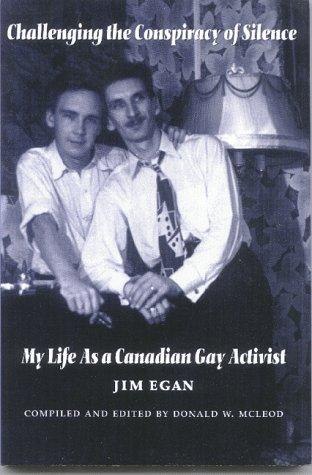 Egan's life was the subject of David Adkin's 1996 documentary Jim Loves Jack: The Jim Egan Story, which features interviews with Egan and Nesbit, reporter Sidney Katz, and George Hislop, another early leader in the movement for glbtq rights in Canada. Egan died peacefully at home on March 9, 2000. Nesbit followed him in death only months later on June 23. In remembering Egan, Joseph Arvay , the lawyer during the pensions case, praised him for his courage and determination in pursuing the pension case, saying that the effort "was something Jim was really proud of" because it paved the way for progress toward equality for glbtq Canadians. "Jim Egan was a real pioneer," stated Arvay, "a real hero." Egan was also prescient in his belief that Canadians who happen to be homosexual would eventually be on a level playing field with other Canadians. Subsequent courts have ruled that same-sex spouses and partners involved in committed relationships are entitled to pensions on the same basis as heterosexual couples.
1934 – Kate Millett is an American feminist writer and activist. She is best known for her 1970 book Sexual Politics. The book offered a comprehensive critique of patriarchy in Western society and literature. In particular, Millett indicted what she saw as the sexism and heterosexism of renowned novelists D.H. Lawrence, Henry Miller, and Norman Mailer, contrasting their perspectives with the dissenting viewpoint of homosexual author Jean Genet. Kate Millett received her B.A. at the University of Minnesota in 1956, where she was a member of the Kappa Alpha Theta sorority. She obtained a first-class degree, with honors, from St. Hilda's College, Oxford in 1958. Sexual Politics was her published PhD thesis from Columbia University in 1970. In a memorable incident, she was a guest on a late-night television program in the UK when a drunken Oliver Reed tried to kiss her, uttering the words "give us a kiss, Big Tits." Reed was made to leave the set. Millett moved to Japan in 1961. Two years later, Millett returned to the United States with fellow sculptor Fumio Yoshimura whom she married in 1965, but they split up in the 1970s. The two divorced in 1985. She was active in feminist politics in late 1960s and the 1970s. In 1966, she became a committee member of National Organization for Women. In 1971, Millett started buying and restoring fields and buildings near Poughkeepsie, New York. The project eventually became the Women's Art Colony Farm, a community of female artists and writers. Her book Flying (1974) tells of her marriage with Yoshimura and her love affairs with women. In 1979, Millett went to Iran to work for women's rights, was soon expelled, and wrote about the experience in Going to Iran. Sita (1977) is a meditation on Millett's doomed love affair with a female college administrator. Upon its publishing, she went from being the darling of the feminist movement to a pariah. Perhaps because of her reluctance to become a spokesperson for the women's movement, Millett and her work failed to achieve the lasting popular recognition enjoyed by other second-wave feminists such as Steinem, Betty Friedan, and Germaine Greer. However, Sexual Politics and several other books by Millett were reissued in 2000, an event that may lead to renewed appreciation of the groundbreaking nature of her writing, art, and activism.
1954 – Michael Patrick King is an openly gay, Emmy winning director, writer and producer for television shows. He started out doing stand-up and sketch comedy comedy but eventually moved into writing for television. His most famous work has been for Sex and the City where he wrote all the season finales and premieres since the second season. King has also recently directed the show's film adaptation. He has also written for another HBO show, Lisa Kudrow's post-Friends project The Comeback, and as well as for broadcast shows Will & Grace, Cybill, and Murphy Brown. He owns Arcade Productions.
1954 – David Wojnarowicz (d.1992) was a gay painter, photographer, writer, filmmaker, performance artist, and activist who was prominent in the New York City art world of the 1980s. The first American gay artist to respond to the AIDS crisis with anger and moral outrage, he used his art as a polemical tool with which to indict those he held responsible for the AIDS epidemic and to document his own suffering. Wojnarowicz had no extensive formal training. Born in Red Bank, New Jersey into a severely dysfunctional family in 1954, he dropped out of high school soon after acknowledging his homosexuality as an adolescent. He was a street kid in New York City at the age of sixteen, turning tricks in Times Square and keeping company with hustlers and other outsiders. Wojnarowicz found salvation in making art and writing. Yet the rawness of his life experiences would always be the stuff of a highly personal and confrontational art. As a young man, Wojnarowicz hitchhiked across the United States and lived in San Francisco and Paris for several months. In 1978, he settled in New York. By the early 1980s he had become, like graffiti artists Jean-Michel Basquiat and Keith Haring, a vital fixture in the East Village art scene in lower Manhattan. Wojnarowicz came to maturity as a contemporary artist and writer during a decade when the arts sought increasingly to address issues of gender, race, and ethnicity. A younger postmodern generation of artists gave expression to these concerns in non-traditional media and often worked in multimedia. For example, Wojnarowicz expressed himself in film, installation art, sculpture, photography, performance art, painting, collage, drawing, and writing. Indeed, he became as fine a writer as he was a visual artist. 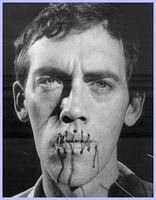 Before being diagnosed HIV-positive in 1987, Wojnarowicz tracked in his confessional art a life that vacillated between sensual abandon and despair, bringing into focus a dark vision of existence that drew upon the examples of Arthur Rimbaud and Jean Genet. With the onset of his disease, Wojnarowicz turned fiercely political. The tragedy and injustices of the AIDS epidemic within the gay community became the central subject in his art and writings. He took to task the medical community and the federal government for their indifference to the pressing health issues of gay men. He passionately protested the fact that, as he put it, so many people were dying 'slow and vicious and unnecessary deaths because fags and dykes and junkies are expendable in this country'. 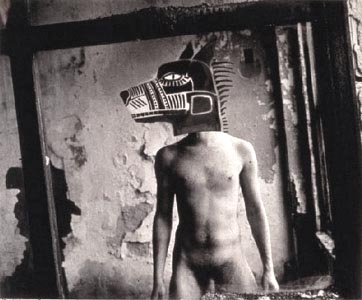 Wojnarowicz was the first American gay artist to step forward in anger and give expression to his moral outrage. His 'post-diagnostic art', as he called it, indicted all those he held responsible for the social and private horrors of those dying from AIDS, including himself. Toward the end of his life, his defiant art was a polemical and poignant record of his cruel demise. Wojnarowicz died of AIDS on July 22, 1992.
1957 – Steven Jay Russell is a U.S. con artist known for escaping from prison multiple times. A film about his life and crimes was produced in 2009, named I Love You Phillip Morris. In 2011, his crimes were featured on the TV show I Almost Got Away with It in the episode "Got a Boyfriend to Support.". He is known to be the only con artist in the world serving a life sentence (since he is sentenced to 140 years). A documentary about his crimes was aired on TV in 2005 On The Run episode "King of Cons" on Discovery Channel. 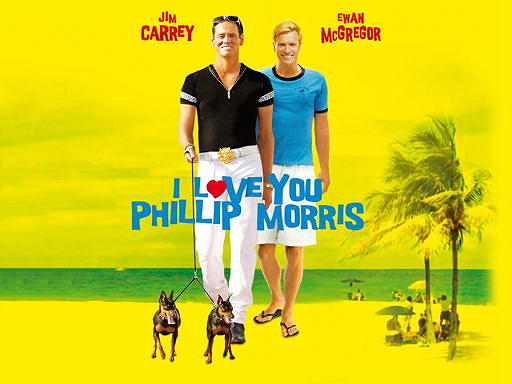 Russell's life of crime started in the early 1990s when he was fired from his job as an executive of a food service company after his employers found out he was gay. He was later arrested for fraud for faking a slip-and-fall accident, and was sentenced to six months in prison. After serving four weeks in jail, Russell escaped by using a spare set of civilian clothes and a walkie talkie to impersonate a guard. He later went to take care of his boyfriend Jimmy Cambell who was dying of AIDS; Cambell died three weeks after Russell was re-arrested and sent back to Harris County jail. In prison Russell met Phillip Morris, whom he quickly fell in love with. The two were later released from prison, and wanting to give Morris a glamorous lifestyle, Russell managed to get a job as the chief financial officer of the North American Medical Management Company (NAMM). He then started embezzling funds, stealing $800,000 before the activity was detected and Russell and Morris were arrested. Sent back to the Harris County jail, Russell, considered a flight risk, had his bail set at $950,000, but later made his next escape by calling the Harris County Records Office, pretending to be a judge, and lowering his bail from $950,000 to $45,000 before posting the reduced bail. He was arrested in a hotel room in West Palm Beach, Florida one week after his second escape. Russell was sentenced to 40 years in prison for the NAMM fraud and was sent back to prison. Russell concocted a new escape after he began collecting green highlighter markers and a spare prison uniform and used his cell toilet to dye the uniform green to look like doctor's scrubs. He then walked out of the front door. After tracking down Morris, he convinced him to run with him and the two fled to Biloxi, Mississippi, making money in casinos, where Russell was later identified and arrested by a U.S Marshal. Morris was also quickly found and arrested. He was sent back to a maximum security prison in Texas to serve an additional 45-year sentence. From here, Russell made his most inventive escape ever; he used acting and laxatives to fake the symptoms of AIDS, and a prison typewriter to fake his medical records to show him as HIV positive, being granted a special-needs parole to a nursing home to die. He then called the prison and parole board, posing as a doctor and AIDS specialist, asking for prisoners interested in an experimental treatment, and volunteered. Once out of Texas, he then sent death certificates to the prison and parole board stating he had died. U.S. Marshals later tracked Russell down in Florida where they arrested him once more. Russell was then sentenced to a total of 140 years in prison (119 for the escapes and subsequent scams). His release date from prison is July 12, 2140.
Rob was one of the greatest ice dancers Canada has ever produced, a gifted choreographer, and by all accounts a witty, well-loved man. With Tracy Wilson, he followed up multiple Canadian dance titles with a medal-winning freeskate to "Maple Leaf Rag" that some judges considered the strongest of the 1988 Olympics. As pros, Wilson and McCall won a World Pro title and toured with Stars on Ice. McCall was very much part of the Canadian and international skating scene, as is obvious from fond mentions in skating books such as Stars on Ice and the autobiographies of Toller Cranston, Brian Orser, and Scott Hamilton. He and Orser were especially close (best friends from childhood but not lovers, as believed by some), and he choreographed some of Orser's best-known pro numbers. McCall's rapid and shocking decline from AIDS has been well-documented, most touchingly in Cranston's Zero Tollerance. In his honor, Orser worked with McCall's family to hold extensive fundraisers and establish funds to further AIDS-related research. Wilson, who has had international success as a sports broadcaster, has become an AIDS activist and spokeswoman.
In November 2000, Cohen's father Peter Cohen, brother of English World Cup winning football player George Cohen, was fatally injured while protecting an attack victim at the Eternity nightclub in Northampton which Peter Cohen managed. He died a month later from head injuries sustained in the assault. Three men were found guilty of violent conduct. Cohen wass married to Abbie Cohen (Blayney), with twin children. The couple have been estranged since 2014, and divorced in March 2016. In January 2016 it was announced, his former Strictly Come Dancing dance partner and now girlfriend, Kristina Rihanoff, will be expecting their first child together. He is clinically deaf, with about 30 to 33 percent hearing loss in each ear, and has been involved in efforts to make rugby more accessible to the hard of hearing, especially younger deaf players. In 2011, Cohen founded The Ben Cohen StandUp Foundation, Inc., which is, according to its website, "the world's first foundation dedicated to raising awareness of the long-term, damaging effects of bullying, and funding those doing real-world work to stop it".  (Click for larger) Off the field he is considered a gay icon, and often speaks favourably of his gay following. He ousted David Beckham as Gay Times' sports personality of the year in 2008, and came second as their sexiest man of the year. Among other Ben Cohen merchandise, he has released calendars since 2009 in which he is often shirtless. Ben appeared on the cover of Attitude's October 2009 issue. In 2010, Cohen donated a signed jockstrap to support GMFA, a British charity addressing gay men's health issues, which was sold at auction at the Royal Vauxhall Tavern. He also featured on the front cover and in an interview section of GMFA's printed FS Magazine in November 2010.
1986 – Leslie Blanchard dies from AIDS in the arms of his partner of ten year, Miguel Braschi, in New York. Braschi’s name is not on the lease of their apartment so he is not protected by rent control. In 1989 the New York Court of Appeals case Braschi v Stahl Associates Co. decided that the surviving partner of a same-sex relationship counted as “family” under New York law and was thus able to continue living in a rent controlled apartment belonging to the deceased partner. In a subsequent appeal, the court found that a “more realistic, and certainly equally valid view of a family includes two adult lifetime partners whose relationship is long term and characterized by an emotional and financial commitment and interdependence”. Application of this standard allowed Braschi to be considered a family member and prevented his eviction from the apartment. The decision represents the first time a court in the United States granted any kind of legal recognition to a same-sex couple.
1989 – ACT UP led a noon protest of 350 people in front of the New York Stock Exchange, targeting Burroughs Wellcome and other companies that it felt were profiteering from the epidemic by their high pricing of the AIDS drug AZT, which was unaffordable to most people living with HIV. The demonstration was planned to coincide with those held in San Francisco and London that day. As a result of these demonstrations, Burroughs Wellcome lowered the price of AZT by 20 percent four days later.
Police estimate some 125 women and men — swinging their boxers, sober cotton undies, raunchy red lingerie and bustiers — showed up at the Oct 28 Panty Picket protest in front of 52 Division. "Fuck you 52" was one of the chants — hearkening back to a slogan from the 1981 bathhouse raids, where police destroyed hundreds of thousands of dollars in property and arrested more than 300 gay men in a carefully orchestrated raid of Toronto bathhouses. The demo protested the hour-and-a-half-long raid on the Pussy Palace — filled with 300 women — by the five male plainclothes police officers on what they call a "routine liquor inspection" and what the women call harassment. One picket sign read "Sluts can't be shamed," and props included a giant vulva and a clothesline of lacey underthings. A call and reply went: "What do we want?" "Pussy!" "When do we want it?" "Now!" Even the cops laughed — at least 18 of whom lined the entrance to 52 Division during the protest.
[{(o)}]|[{(o)}]|[{(o)}]|[{(o)}]| [{(o)}]|[{(o)}] |
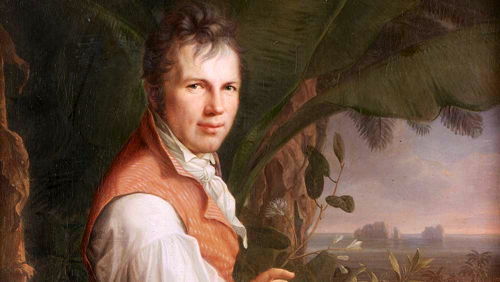
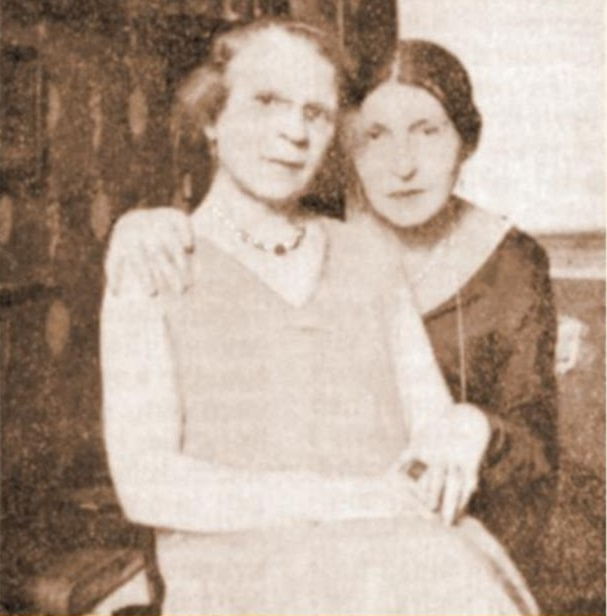
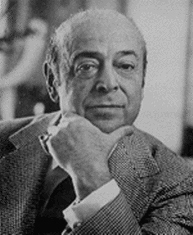
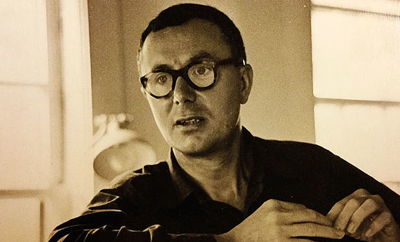
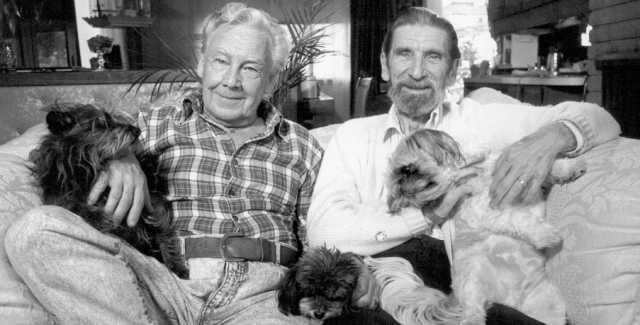
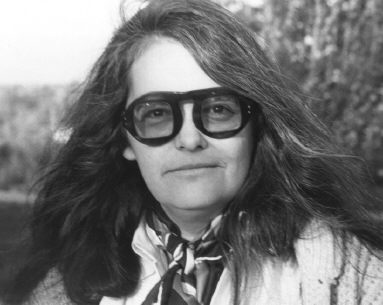
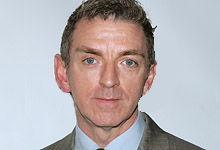
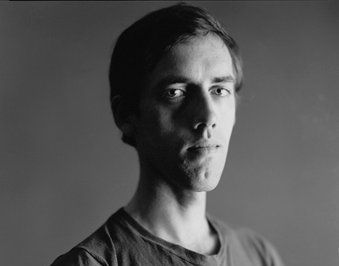
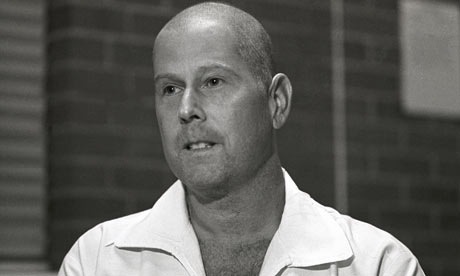
 Tracy Wilson & Rob McCall
Tracy Wilson & Rob McCall